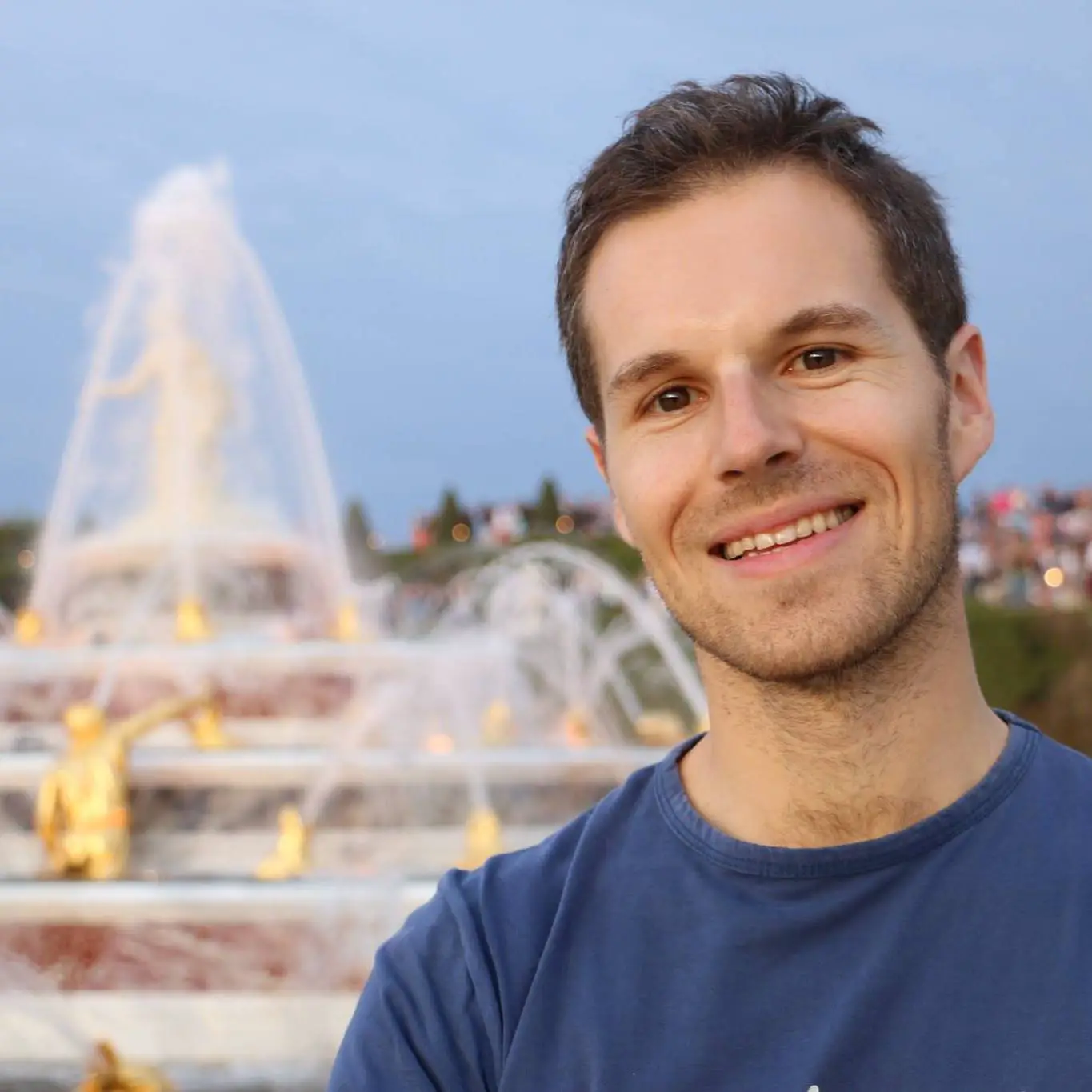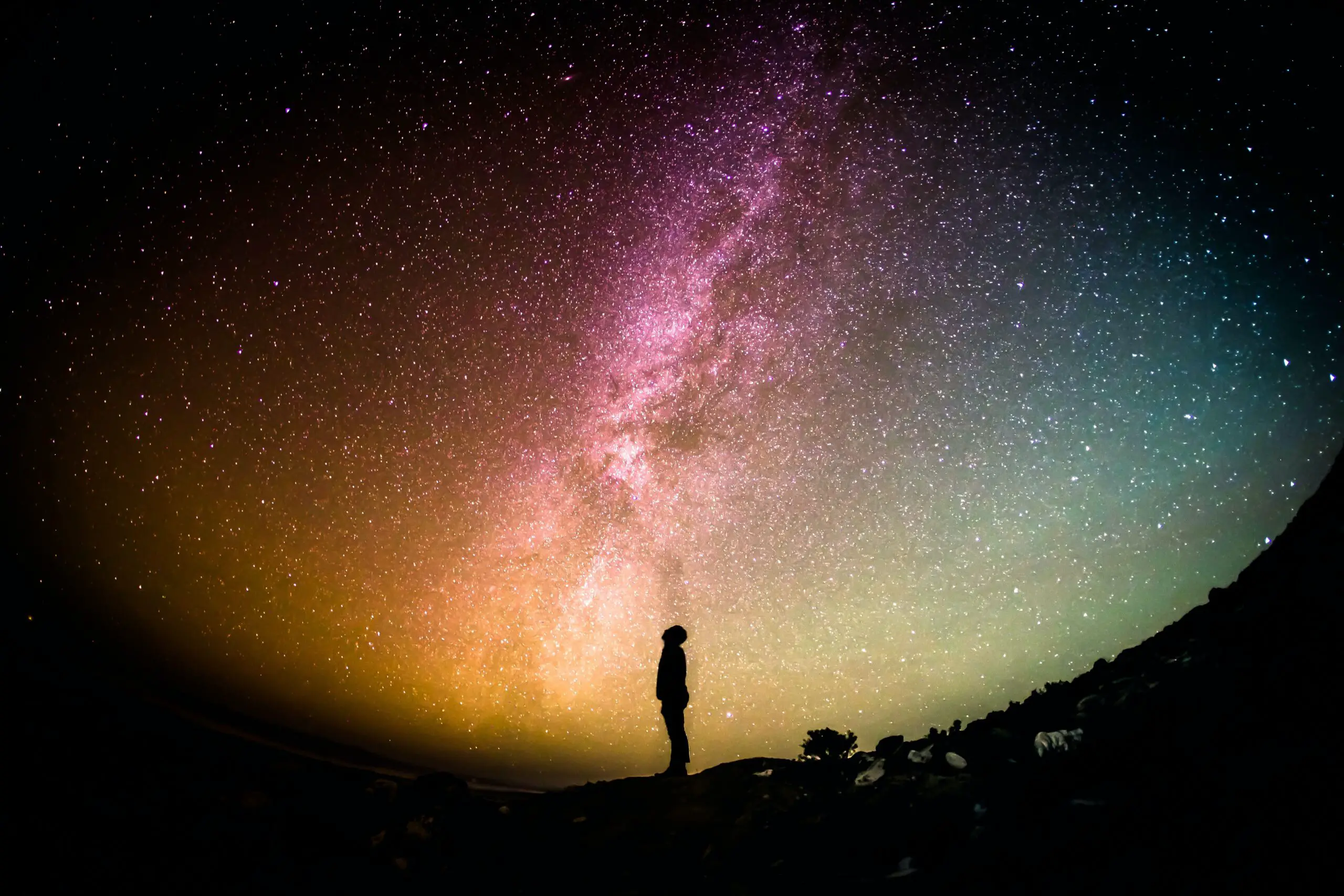The North of Chile has the clearest skies in the world: no light pollution, dry climate with very few clouds, thinner air because of the altitude… All of this makes it the best place in the world to observe the planets, stars, galaxies and other formations in the sky. For that reason, most of the planet’s most powerful and advanced telescopes are there, in the Atacama desert. Actually, it is projected that by 2025, over two thirds of the world’s astronomical infrastructure will be in this area!
That also makes Chile the world capital for astro-tourism, with more and more astronomy tours available, and many observatories that are open to visitors across the country. From Santiago to the North, here are some of the main places to visit and the main activities to do that are related to astronomy in Chile.
Table of Contents
Near Santiago:
Let’s be clear: I only mention these for people who wouldn’t have a chance to visit the North of Chile and only stay around Santiago or travel South. If you plan to travel North, you can definitely skip the observatories near the capital and read the next two sections about Elqui Valley and San Pedro de Atacama.
Observatorio Astronómico Andino:
Probably the best one to visit in the area, for several reasons: it is not too far from Santiago, but in the mountains, in a place where the city’s lights don’t interfere. It is also the only observatory that has professional guides in English. The visit is great for beginners, as it starts with a short movie introducing sky observation, and a cocktail-style dinner. It isn’t cheap, though.
Cielos Chilenos:
This one is really interesting and unique, as you get to observe the moon and planets both with daylight and at night. Then at night, of course, you will be able to see much more. It is also rather expensive, though.
Observatorio Roan Jose:
Located in the beautiful valley of Cajon del Maipo, just Southeast of Santiago, this small observatory is not as well equipped as the previous two, however, it is much cheaper. And it has several advantages: First, they offer a tour related to the Mapuche cosmovision, where you will get to learn about how this indigenous ethnia relates with the sky and the universe. Second, you can camp or rent a cabin there. But you will need to understand Spanish!
http://observatorioroanjase.com/
The Moon seen from an observatory near Santiago.
Pailalén:
Also located in Cajon del Maipo, it has a better infrastructure than Roan Jose in terms of telescopes. You can also use the hiking trails during the day and have dinner there. But they don’t have cabins, and you will also need to understand Spanish.
Cerro Calán & Cerro Pochoco:
Unlike the first four places that I mentioned which are clearly adapted for tourism, these two observatories are run by scientists. If you cannot get out of Santiago, Cerro Calán is great because it is the only one located inside the city and is easily accessible. But the sky is way too clear to have a good observation there. Cerro Pochoco is a great and cheap option, located near Observatorio Astronómico Andino, but it’s complicated to organize a visit there, and you are not authorized to observe through their telescopes. For these reasons, I would not recommend these last two options -unless you have no other choice.
In Elqui Valley:
Ok, now we are talking! This is where you will find many observatories, with clear conditions over 300 nights per year, and some of the darkest skies in the world. Of course, a lot of them are reserved for scientists, but there are a handful that can be visited. However, some are very touristy, and some don’t provide a great experience. Here are the ones I would recommend in the area:
Observatorio del Pangue:
Probably the best tourism-oriented observatory in Elqui Valley. Not only do they offer tours in English and French (besides Spanish of course), but they also have state-of-the-art technology, including the largest telescope for tourism in the entire country (25 inches). They also offer different types of tours for beginners, amateurs, and astrophotographers. Very professional and knowledgeable guides as well, and limited to small groups of up to 10 people. And you can also rent theor telescopes for an entire night.
https://observatoriodelpangue.blogspot.com/
Long-exposure picture of the sky from Elqui Valley
Cielo Sur Astroturismo:
They also offer tours in English and French, limited to small groups as well. In case there is no availability at El Pangue, this is the second best option. By the way, why is it important to be in a small group? Because each observatory has a limited number of telescopes available, typically one to four. So if you are in a group of 25+ people, you will have to wait in line for each observation. When it’s less than 10 people, it makes for a better experience.
http://www.observatoriocielosur.cl/
Hacienda Los Andes:
This one is not located in Elqui Valley, but in Limari Valley, the next valley to the South. It is a bit more isolated, but it has many advantages. The first one, is that the owner of the place is a professional astronomer, who has installed several telescopes for astrophotography, and conducts tours in English, Spanish, French or German. The second one, is that Hacienda Los Andes is also a lodge built into a typical colonial building, and offers great value for the quality you get, with a good restaurant. They also offer horseback riding tours, hiking and other activities: you may as well want to spend several days and nights there. Third advantage: it is not touristy and the area never gets crowded!
http://www.haciendalosandes.com/en/astronomy.html
Astro Elqui:
If you want something a bit different, this might be a good option. Here, the focus is not on science, rather on stories. They will tell you about arqueo-astronomy, about the connection with the ancient tribes that lived in the area, tell you stories, with music around a bonfire… It’s not the best tour in terms of observation, but it brings a different vibe to the whole experience. And they also have cabins where you stay for the night. However, it’s in Spanish only.
https://cabanas-astro-elqui.webnode.cl/
In San Pedro de Atacama:
The sky there is nearly as clear as it is in Elqui Valley, with even less clouds. And since it is the tourism hub of the North of Chile, many tour operators there offer astronomy tours – but many of them are not very professional or very well equipped. Here are the best ones:
The sky near San Pedro de Atacama
Space Obs:
This is THE reference in San Pedro de Atacama. Founded by Alain, a professional French astronomer with a sense of humor who conducts tours in English and French. The tour starts with some basic information around a bonfire and a hot chocolate, before getting to the observation area where they have seven different telescopes, the most of any tourism-oriented observatories in Chile.
Etnikus:
What’s interesting with them is that they talk a lot about ancient mythology, from the Greek constellations to the cosmovision of the ancient civilizations who lived in the desert. Good bilingual guides for this tour, with good telescopes and a dark observation area outside town. The bonus with them: they have comfortable seats where you can stay and wait until it’s your turn to observe in the telescope.
Alarkapin:
It’s more or less the same concept that Etnikus, with a focus on how the indigenous people used their knowledge of the sky not only for orientation, but to help them in every aspect of life, such as the agricultural activity that depends on the seasons and the effects of the moon, and their spirituality. Tours in English conducted by indigenous guides. They also offer night walks under the moonlight.
Some scientific observatories open to visitors:
In Elqui Valley:
Several of the best scientific observatories in the world are located in Elqui valley, and some of them are open to visitors. However, you cannot make any observation in their telescopes. This is more a way for you to see professional infrastructure with enormous telescopes, and receive scientific explanations first hand.
Among these observatories, the best one to visit is La Silla, which features two of the most productive 4-metre class telescopes in the world, followed by Gemini, which has the second largest telescope in the country. Las Campanas and Cerro Tololo are two other professional observatories that offer day tours. Please note that each of them typically receives visits only one day a week.
The Very Large Telescope in Paranal:
The largest telescope on earth is not found in Paranal, however, the site features no less than four telescopes with an abertura of 8 meters, which is unique in the world. The site is located in a very isolated area, in Paranal. You can visit all the infrastructure, and you might recognize it if you have seen the James Bond movie “Quantum of Solace” which was partly shot there. Paranal is far away from everything, so you need to plan an entire day for this particular visit.
https://www.eso.org/public/about-eso/visitors/paranal/
From San Pedro de Atacama:
The ALMA Project (Atacama Large Millimeter Array) is by far the most ambitious astronomical project in the world. It consists of 66 gigantic radio telescopic antennas, whose goal is to get back to the origins of the Universe. Located on a plateau at over 5000 meters above sea level, the site of the antennas is closed to visitors, however, the operational center and its facilities are open to the public and are a short drive from San Pedro de Atacama.
https://www.eso.org/public/about-eso/visitors/alma/
Meteorite museum in San Pedro de Atacama:
There is a meteorite museum in San Pedro de Atacama, where you will learn about the formations of meteorites, and see some samples, some of them found in the Atacama desert itself. It’s a short visit, but educational and entertaining.
http://www.museodelmeteorito.cl
Useful tips:
Check the moon calendar:
This is vital! If the moon is up at night, there is no way to observe the sky properly, as it is too bright. So you need to choose dates when the moon is not visible between 8pm and 2am, roughly. Here is a useful calendar that shows you the exact time of moonrise and moonset: https://www.tutiempo.net/santiago.html?datos=calendario
Book in advance:
Most of these tours can take a small amount of people only, so it is wiser to book several days ahead of time. And don’t keep the astronomy tour for your last night in the area: Indeed, some of the tours may be cancelled because of the clouds or bad weather. So it’s better to schedule a few days before your departure, so that you can have some buffer days in case of cancellation. In any case, they will refund you.
Bring warm clothes:
The night gets really cold in the desert. Warm hats, scarves, gloves and even ear protection can be a good idea.
Bring binoculars:
The sky is so clear and bright that you can actually observe a lot of objects with good binoculars. You can try it at home, to give you an idea. But it really works well in the desert with no public lights around.

Avid traveler, journalist and writer, he moved away from his native France back in 2006 and settled in Chile. After visiting the country North to South, learning extensively about its culture, History, gastronomy, Thomas started to work as a tour guide. He liked it so much that he ended up creating his own tour agency in Valparaiso, where he lives today. You can visit my site at: https://chileprivatetours.com/
